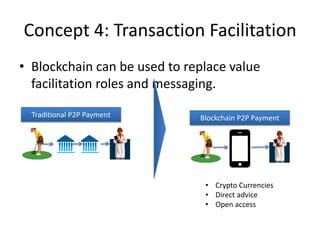The Role of Blockchain in Secure P2P Transactions
Peer-to-peer (P2P) transactions have long been a staple of online communities, allowing users to exchange goods and services directly without the need for intermediaries. However, traditional P2P systems often face serious security risks, especially when it comes to decentralized networks. In this article, we’ll look at the role of blockchain technology in securing P2P transactions.
What is Blockchain?
A blockchain is a decentralized, digital ledger that records transactions between multiple nodes on a network. It’s the technology behind cryptocurrencies like Bitcoin and Ethereum, but its applications extend far beyond financial transactions. With blockchain technology, all transactions are recorded on a public, transparent ledger (called a blockchain) that is tamper-proof and immutable.
Why Blockchain Is Crucial to P2P Transactions
Traditional P2P networks often rely on central authorities or intermediaries to facilitate transactions, which inherently pose security risks. For example:
- Centralized Risk: When a network is controlled by a single entity, it becomes vulnerable to attacks, hacking, and manipulation.
- Lack of Trust: Without a trusted intermediary, users may be wary of P2P transactions, fearing that their funds or data will be compromised.
The decentralized nature of blockchain technology and its security features make it an ideal solution for securing P2P transactions. Here are some ways blockchain technology increases the security of online communities:
- Immutable Records

: A blockchain ledger ensures that all transactions are permanent, tamper-proof, and difficult to change.
- Implementation of Smart Contracts
: Blockchain-based smart contracts can automate complex transactions, eliminating the need for intermediaries and reducing the risk of error or manipulation.
- Consensus mechanisms: Decentralized consensus algorithms (e.g., proof-of-work or proof-of-stake) ensure that all nodes in the network agree on the state of the ledger, preventing a single entity from tampering with the records.
Use cases for secure P2P transactions
The benefits of blockchain technology include a variety of use cases that require decentralized networks:
- Decentralized finance (DeFi): Blockchain-based lending platforms and decentralized exchanges (DEXs) enable peer-to-peer transactions without intermediaries.
- Gaming: Online gaming communities can use blockchain solutions to conduct secure, decentralized transactions and transfer ownership.
- Supply chain management: Blockchain-based smart contracts ensure that goods are safely transferred and paid for, eliminating intermediaries.
Challenges and Limitations
While blockchain technology offers numerous benefits in the context of P2P transactions, there are still challenges to overcome:
- Scalability: The current state of blockchain technology is not yet scalable enough to handle massive amounts of data and transactions.
- Interoperability: Different blockchains use different consensus algorithms, making it difficult to ensure smooth communication between nodes.
Conclusion
Blockchain technology has the potential to revolutionize P2P transactions by providing a secure, decentralized, and transparent transaction ledger for all users. With its advantages in implementing smart contracts, immutability, and consensus mechanisms, blockchain technology is ideally suited to securing online communities. As the technology evolves, we can expect even more innovative applications of blockchain technology in securing P2P transactions.
Future Directions
To address scalability challenges and interoperability constraints, researchers are exploring new blockchain architectures, such as:
- Sharded Blockchain: Dividing a blockchain into smaller fragments to increase scalability.
